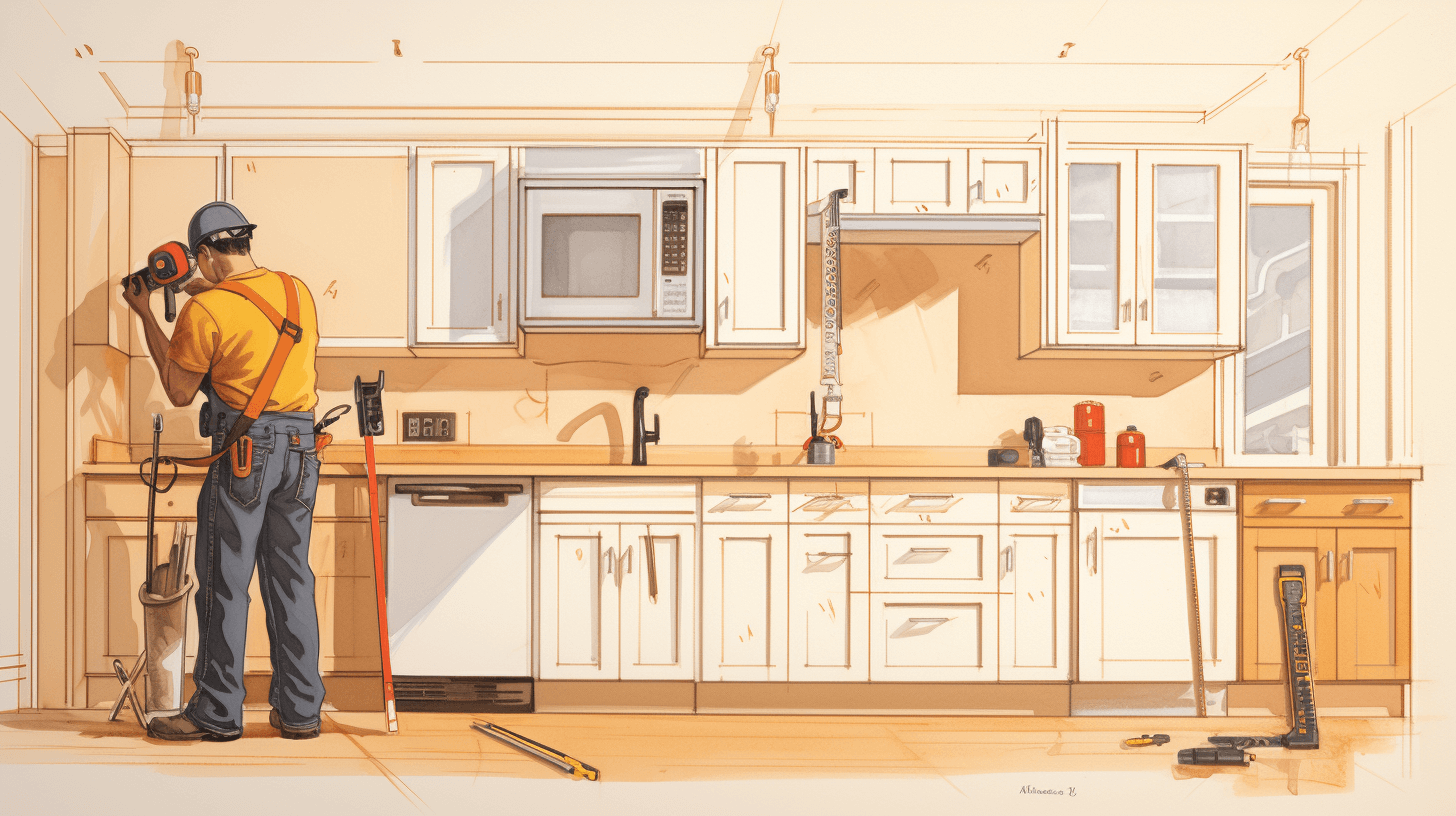
How Kitchen Remodeling Works
How Kitchen Remodeling Works
Are you considering remodeling your kitchen?
It can be an overwhelming process, but it doesn’t have to be. We’ll walk you through the steps we used when getting our kitchen remodeling in minneapolis. We’ll go through what we did from A-Z including assessing your needs and goals, to budgeting and financing, to selecting materials and appliances.
We’ll also cover demolition and removal, installation and construction, and finishing touches.
Let’s get started on your dream kitchen!
Assessing Your Needs and Goals
Before starting your kitchen remodel, it’s important to assess your needs and goals. This involves setting a budget and timeline, as well as choosing design elements.
Taking the time to do this will ensure your kitchen remodel is a success.
Determining Budget and Timeline
Figuring out your budget and timeline for a kitchen remodel is key! It helps to decide what features you need and how much you can realistically afford, and when you’d like the project to be completed. Consider how much you’re willing to spend, and decide what you’re willing to splurge on and what you’re willing to compromise on.
Once you’ve an idea of what you want to spend, start researching contractors and materials. Make sure the contractor you choose is licensed and insured, and ask for references. Ask questions about prior projects and compare bids to find the best price. If you’re on a tight timeline, see if your contractor can prioritize certain tasks first.
Be sure to factor in any unexpected costs and plan for potential delays. With the right plan and budget, you can make sure your kitchen remodel runs smoothly!
Choosing Design Elements
When choosing design elements for your kitchen remodel, consider your style, budget, and timeline. Think about the type of cabinets and countertops that will fit into your remodel plan. Consider the types of appliances and lighting fixtures you want to include.
Do you prefer modern or traditional styles? Are there certain colors or materials you prefer? Think about these details before making any purchases.
Additionally, check to see if your budget and timeline can accommodate any upgrades. For instance, if you’d like to add a backsplash to your kitchen, can you fit it into your budget and timeline?
Budgeting and Financing Options
Once you’ve identified your needs and goals for kitchen remodeling, it’s time to think about budgeting and financing options.
There are some cost-saving strategies you can employ, such as prioritizing your needs over wants, shopping around for the best deals on materials and appliances, and considering DIY options for certain tasks.
Additionally, there may be loan or credit options available to you, such as home equity loans, personal loans, or credit cards.
It’s important to carefully consider the terms and interest rates associated with these options to ensure they fit within your budget and financial goals.
Cost-Saving Strategies
Saving money on your kitchen remodel doesn’t have to be hard – there are plenty of cost-saving strategies you can use!
One of the best ways to save is by shopping around for the best prices on materials and appliances. Don’t just buy from the first store you visit, but look at a few different ones to compare prices. Don’t be afraid to negotiate and ask for discounts, too.
You could also consider buying used and pre-owned materials, like cabinetry and countertops. There are plenty of quality materials available second-hand, and you can save a lot of money.
Finally, you can even try doing some of the remodeling yourself. It can be a great way to save money and to get creative with your kitchen remodel. Just make sure you know what you’re doing!
With these cost-saving strategies, you’ll be able to keep your kitchen remodel on budget.
Loan or Credit Options
Looking for loan or credit options for your kitchen remodel? Consider researching different lenders to find the best rates and terms. Your credit score and financial situation will determine what kind of loan you’re eligible for, but don’t settle for the first option you come across. Shop around for the best deal and find a loan that fits within your budget. Don’t forget to factor in the loan’s interest rate and repayment terms.
If you don’t have the credit score necessary for obtaining a loan, you may want to consider a home equity loan. This type of loan uses your home as collateral, so it’s important to make sure you can make the payments. A home equity loan may also carry higher interest rates, so make sure you can afford the payments.
You may also be able to find a 0% APR credit card. These cards can be a great way to finance remodeling projects, as long as you can pay off the balance in full before the introductory rate ends. Be sure to read the terms and conditions carefully and make sure you can make your payments on time.
No matter which loan or credit option you choose, make sure you understand the terms and conditions and can afford the payments. Doing your research beforehand will help ensure that your kitchen remodel is a success.
Planning the Layout and Design
When planning your kitchen remodel, you’ll need to consider both the functional and aesthetic aspects of the layout and design.
Make sure to keep your budget in mind when deciding what features you want to include in your remodel.
Functional Vs. Aesthetic
Choosing between functional and aesthetic elements in your kitchen remodel can be difficult. You have to decide what’s most important for your needs and preferences. Functionality may include things like how much storage space you need, the types of appliances you want, and how many people you need to accommodate.
Aesthetic elements are more focused on the look of the kitchen, such as what materials and colors to use and the overall design.
It can be tempting to prioritize aesthetics over functionality, but you should also think about the practical aspects of the remodel. Consider how the new design will actually work for you and your family. Will it be easy to clean and maintain? Is there enough room for everyone? Will you have enough storage space for all your kitchen items?
Ultimately, you have to find a balance between aesthetics and functionality when it comes to your kitchen remodel. It’s important to think about both elements in order to create a space that’s both beautiful and practical.
Budget Considerations
Deciding your budget for your kitchen remodel is key, as it will inform the decisions you make in terms of both aesthetics and functionality. When setting your budget, you’ll need to factor in the cost of materials, labor, and any appliances you’ll need to purchase or replace. It’s best to set a realistic budget and stick to it, so you don’t overspend.
You may want to consult a designer or contractor to get an accurate estimate. Once you’ve a budget, you’ll need to prioritize the features you want to include in your remodel and determine which ones fit into your budget. You may need to compromise on certain features if they’re too expensive, or you can look for comparable options that are more budget-friendly.
If your budget is limited, you can always start small, and add more features as you can afford them. This way, you can create a kitchen you love without breaking the bank.
Selecting Materials and Appliances
Selecting materials and appliances is a big part of kitchen remodeling. You’ll need to consider your budget, style preferences, and the size of the kitchen when deciding what to choose. Cabinets, countertops, flooring, and fixtures all come in a variety of options. You’ll also need to choose faucets, sinks, and appliances. Think about how you use your kitchen and what types of appliances you need. For example, an oven with a convection feature is great for baking.
Think about the materials you want to use. Natural materials are usually more expensive, but they last longer and look great. You can also opt for laminate countertops or cabinets. These are cheaper, but may not be as durable. You also need to decide how to organize your space and what type of storage solutions to use. Drawers and shelves are great for storing utensils, dishes, and food items.
Finally, make sure the appliances you choose are energy efficient. Look for Energy Star rated products when possible. This will save you money in the long run.
Kitchen remodeling can be a very exciting process, so take the time to carefully consider your decisions and you’ll be rewarded with a beautiful new kitchen.
Demolition and Removal
Before you can start installing new materials and appliances, you’ll need to demolish and remove existing items in the room. This could mean taking out cabinets, countertops, flooring, and more. It’s important to have a strategy in place before starting demolition.
Start by removing all items from the room that can be saved, such as some furniture and appliances. Then begin taking out the major components. If you’re removing a countertop or cabinet, make sure to disconnect the plumbing and electrical connections. For flooring, you’ll need to use a crowbar or other tools to remove it.
When disposing of the removed items, be mindful of local regulations. Some items may need to be disposed of in a certain way, while others can be recycled or donated. Make sure to dispose of the items responsibly and safely.
With the demolition and removal done, you’ll be one step closer to your dream kitchen remodel.
Installation and Construction
Now that the demolition and removal are complete, it’s time to install and construct the new materials for your dream kitchen.
This process begins with the framing, which involves constructing the walls, ceilings, and floors.
Your contractor will then install the plumbing and electrical wiring, followed by the cabinets, countertops, and appliances.
During this time, your contractor may also suggest installing a new sink, faucet, and lighting fixtures.
Finally, your contractor will replace the flooring and paint the walls with the colors of your choice.
Once the installation and construction are complete, the finishing touches will be added to make your kitchen look and feel perfect.
Finishing Touches and Final Inspection
Once your kitchen remodel is complete, it’s time for the finishing touches and final inspection.
You’ll want to thoroughly check that everything is in place and according to your specifications.
Don’t forget the importance of finishing touches to make your new kitchen look perfect!
Final Inspection Checklist
You’ll want to make sure your kitchen remodeling project passes its final inspection with flying colors by following this checklist.
- Check the electrical work, from outlets and wiring to switches and fixtures.
- Make sure all the appliances are installed correctly and safely and that the venting for the gas appliances is up to code.
Inspect the plumbing, including water lines, drains, and faucets.
Ensure the countertops, cabinets, and other surfaces are in good condition and up to safety standards.
Pay special attention to the floors, checking for evenness and stability.
Finally, ensure all safety requirements are met, from fire alarms and smoke detectors to windows and doors.
Go over every detail to make sure your kitchen remodel is complete and up to code.
Importance of Finishing Touches
Finishing touches can make all the difference in the success of your remodel, so it’s important to take the time to make sure they’re done right. From the perfect paint color to the hardware that ties it all together, these small details can be the difference between a mediocre remodel and one that you love. Even seemingly small things like the placement of a light switch can make a big impact. Paying attention to the layout of the room and making sure everything is placed correctly can also be essential.
Adding the right accents will give your kitchen the character and personality you’re looking for. These can include fixtures like lighting, cabinet knobs, wall art, and more. Spend some time looking for pieces that you love and that fit with your overall design. Consider how the colors and materials will look together and make sure they match the style of the room.

